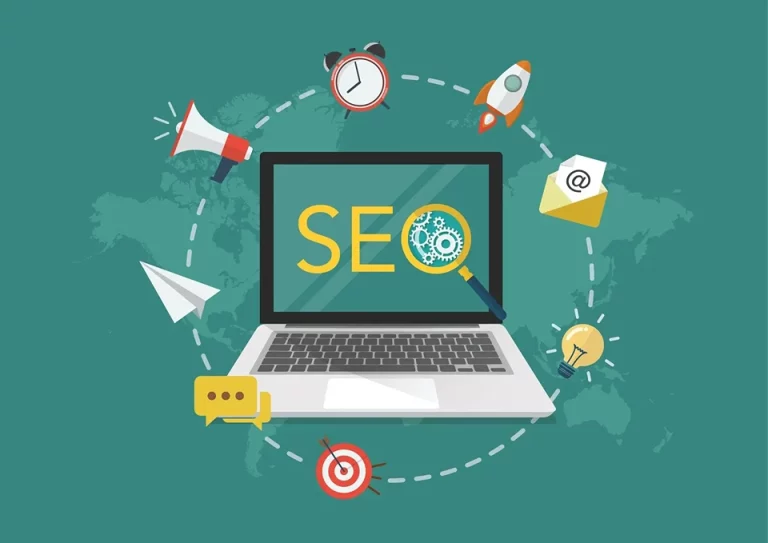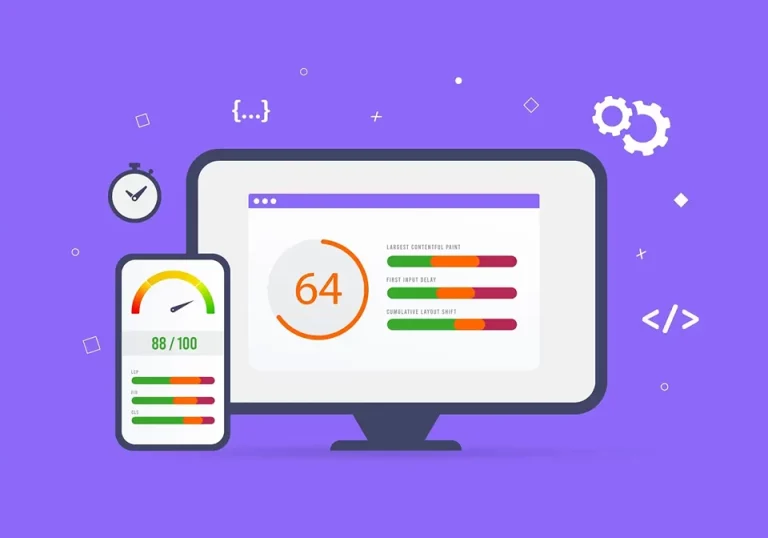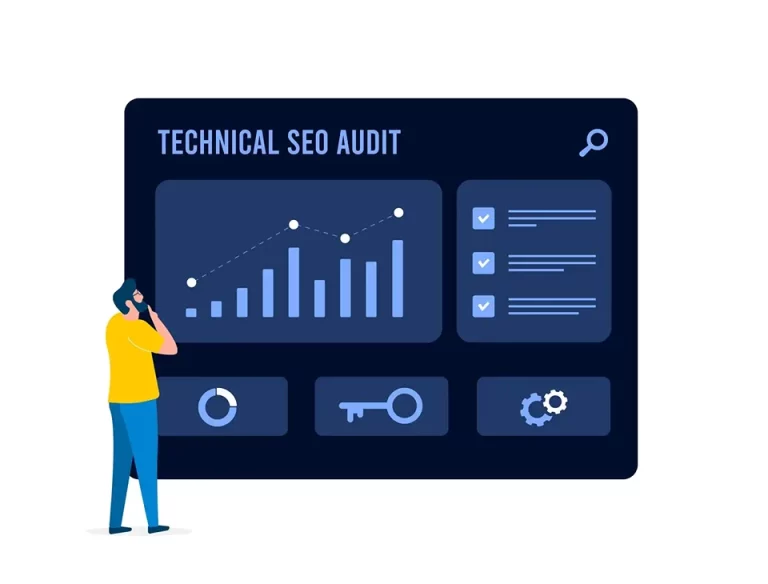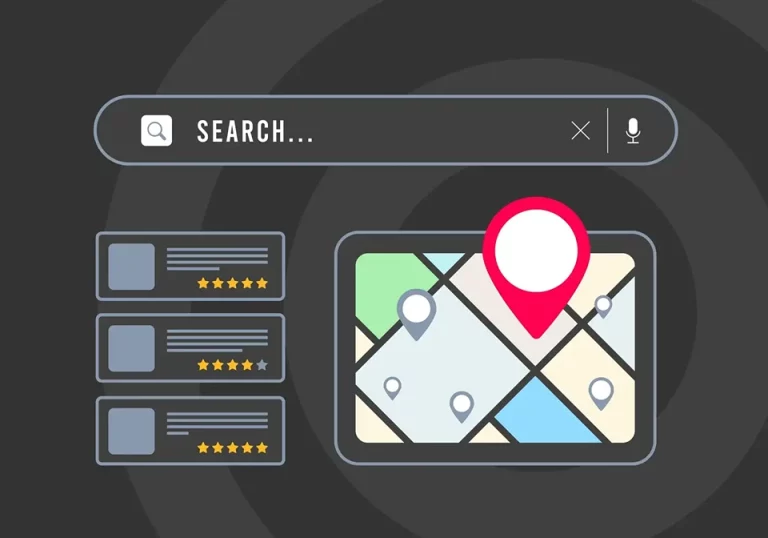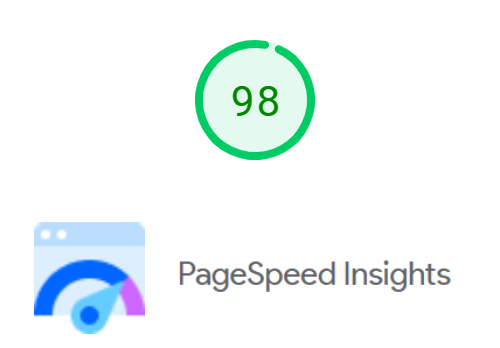SEO Optimization
What is SEO and how does it work?
Are you at the beginning of your SEO journey?
You may have heard that SEO optimization can help drive higher traffic to your web pages and get you higher rankings in search engines like Google, but you need to figure out how it works or which areas to focus on. You’ve come to the right place.
Learn what every innovative entrepreneur or digital marketer should know about SEO.
Good SEO involves many different activities, including:
- Identifying suitable keywords with high search potential
- Creating high-quality and valuable content and optimizing it for search tools, but especially for users
- Quality backlinks from high-quality and relevant websites
- Measuring and monitoring results.
Currently, SEO optimization is considered a fundamental marketing activity.
Quality
Everything we do, we do at 110%. You don't have to worry about your project being done poorly.
History
We have over 20 years in the digital marketing industry. We are the best choice for your project.
Price
With us, you don't overpay for the entire property on projects. Our prices are affordable for everyone.
Testimonials
We have dozens of projects under our belt. All of our clients will tell you that working with us is perfect.
Differences between paid and organic search
At the beginning, you need to understand the differences between organic and natural search – SEO – and paid search, often referred to as PPC.
There are five key differences:
Position
The first difference is that paid search results appear at the top of the search engine results pages, and organic results appear below them.
Time
Another critical difference between paid and organic search is time. With paid search, you get results almost instantly, while organic search often takes weeks, months, or even years. It is essential to realize that results in organic search may come in the medium to long term with proper optimization.
Payment
As for paid advertising for displaying results, you pay for a click on a link to your website. You pay per click (PPC) based on the current market price of the search engine for a click (CPC). You pay a fee every time a user clicks on your ad. So instead of relying on the organic display of your website in the search engine, you are buying a show for your site in the search engine by paying, for example, Google, to display your ad when a Google user searches for the keyword you target with this ad.
Organic search is free but also requires a significant investment of resources and time.
Return on Investment
As for the return on investment, it is actually much easier to measure with paid search. This is partly because Google provides more keyword data than you can see in Google Analytics.
However, the return on investment in paid search may stagnate or even decrease over time. Measuring the return on investment with organic search is more complex but often improves over time. In the long run, organic search can offer an excellent return on investment.
Share of organic and paid traffic
As for the share of traffic, approximately 25% of users click on paid results, and 75% of users click on SEO results. So the percentage of clicks is higher for organic results. However, paid advertising has a higher conversion rate than organic traffic.
Service price list
| Preliminary comprehensive website audit | ✅ |
|---|---|
| Research the most relevant keywords | 3 |
| Complex website optimization ON PAGE SEO | ❌ |
| Backlink building – linkbuilding OFF PAGE SEO | ❌ |
| Continuous monitoring of competitors and improvement and monitoring of positions | ❌ |
| Monthly comprehensive report | ❌ |
| Keyword targeting | ❌ |
|---|---|
| Number of optimized keywords | ❌ |
| Preliminary SEO analysis | ❌ |
| Creation of SEO strategy and SEO plan | ❌ |
| Help with the keywords | ❌ |
| Your competitor analysis report | ❌ |
| SEO optimization of HTML source code | ❌ |
| Creating META tags | ❌ |
|---|---|
| Creating an XML Sitemap file | ❌ |
| Check for duplicate content | ❌ |
| Creating a list of nice optimized URLs | ❌ |
| Text content optimization | ❌ |
| Creating and optimizing a robots .txt file | ❌ |
| Canonicalization | ❌ |
| Creating a RSS feed | ❌ |
| Image optimization | ❌ |
| Optimising videos | ❌ |
| Creating descriptions in search engines | ❌ |
| Anchor tag optimization | ❌ |
| Creation of new optimized pages | ❌ |
| Making Google Webmaster account | ❌ |
| Making Google Analytics account | ❌ |
| Check NO FOLLOW backlinks | ❌ |
|---|---|
| Creating articles | ❌ |
| Publishing articles | ❌ |
| Entering article URLs | ❌ |
| Creation of press releases | ❌ |
| Publication of press releases | ❌ |
| Creating optimised URLs for published press releases | ❌ |
| Social bookmarks | ❌ |
| Creating a blog | ❌ |
| Creating optimized URLs for published blog articles | ❌ |
| Creating 2.0 press releases | ❌ |
| Sending URLs of created 2.0 press releases | ❌ |
| Publishing posts in Quora | ❌ |
| Sending Quora URLs | ❌ |
| Submitting optimized images to search engines | ❌ |
| Answer questions | ❌ |
| Uploading and optimizing client’s videos | ❌ |
| Creating a PPT presentation | ❌ |
| Sending PPT presentation URL | ❌ |
| LinkedIn posts | ❌ |
| Submitting an optimised URL for LinkedIn | ❌ |
| Continuous monitoring of your website | ❌ |
| Continuous monitoring of your competitors’ websites | ❌ |
| Create a local Google listing | ❌ |
|---|---|
| Locally classified submissions | ❌ |
| Company record | ❌ |
| Comprehensive website audit | ❌ |
|---|---|
| Comprehensive report on progress | ❌ |
| Chat support | ❌ |
| Email support | ❌ |
| Phone support | ❌ |
| SMS support | ❌ |
| Skype support | ❌ |
| WhatsApp support | ❌ |
| Preliminary comprehensive website audit | ✅ |
|---|---|
| Research the most relevant keywords | ✅ |
| Complex website optimization ON PAGE SEO | ✅ |
| Backlink building – linkbuilding OFF PAGE SEO | ✅ |
| Continuous monitoring of competitors and improvement and monitoring of positions | ✅ |
| Monthly comprehensive report | ✅ |
| Keyword targeting | 3 |
|---|---|
| Number of optimized keywords | 3 |
| Preliminary SEO analysis | ✅ |
| Creation of SEO strategy and SEO plan | ✅ |
| Help with the keywords | ✅ |
| Your competitor analysis report | ❌ |
| SEO optimization of HTML source code | ✅ |
| Creating META tags | 10 |
|---|---|
| Creating an XML Sitemap file | ✅ |
| Check for duplicate content | ✅ |
| Creating a list of nice optimized URLs | ✅ |
| Text content optimization | ✅ |
| Creating and optimizing a robots .txt file | ✅ |
| Canonicalization | ✅ |
| Creating a RSS feed | ✅ |
| Image optimization | ✅ |
| Optimising videos | ✅ |
| Creating descriptions in search engines | ✅ |
| Anchor tag optimization | ✅ |
| Creation of new optimized pages | ✅ |
| Making Google Webmaster account | ✅ |
| Making Google Analytics account | ✅ |
| Check NO FOLLOW backlinks | ✅ |
|---|---|
| Creating articles | 2 |
| Publishing articles | 2 |
| Entering article URLs | 40 |
| Creation of press releases | ❌ |
| Publication of press releases | ❌ |
| Creating optimised URLs for published press releases | ❌ |
| Social bookmarks | 20 |
| Creating a blog | ✅ |
| Creating optimized URLs for published blog articles | 20 |
| Creating 2.0 press releases | 1 |
| Sending URLs of created 2.0 press releases | 1 |
| Publishing posts in Quora | 1 |
| Sending Quora URLs | 20 |
| Submitting optimized images to search engines | 5 |
| Answer questions | ✅ |
| Uploading and optimizing client’s videos | 10 |
| Creating a PPT presentation | ✅ |
| Sending PPT presentation URL | 1 |
| LinkedIn posts | ❌ |
| Submitting an optimised URL for LinkedIn | ❌ |
| Continuous monitoring of your website | ✅ |
| Continuous monitoring of your competitors’ websites | ✅ |
| Create a local Google listing | ✅ |
|---|---|
| Locally classified submissions | ❌ |
| Company record | ✅ |
| Comprehensive website audit | ✅ |
|---|---|
| Comprehensive report on progress | ✅ |
| Chat support | ✅ |
| Email support | ✅ |
| Phone support | ✅ |
| SMS support | ✅ |
| Skype support | ✅ |
| WhatsApp support | ✅ |
| Preliminary comprehensive website audit | ✅ |
|---|---|
| Research the most relevant keywords | ✅ |
| Complex website optimization ON PAGE SEO | ✅ |
| Backlink building – linkbuilding OFF PAGE SEO | ✅ |
| Continuous monitoring of competitors and improvement and monitoring of positions | ✅ |
| Monthly comprehensive report | ✅ |
| Keyword targeting | 10 |
|---|---|
| Number of optimized keywords | 10 |
| Preliminary SEO analysis | ✅ |
| Creation of SEO strategy and SEO plan | ✅ |
| Help with the keywords | ✅ |
| Your competitor analysis report | ❌ |
| SEO optimization of HTML source code | ✅ |
| Creating META tags | 20 |
|---|---|
| Creating an XML Sitemap file | ✅ |
| Check for duplicate content | ✅ |
| Creating a list of nice optimized URLs | ✅ |
| Text content optimization | ✅ |
| Creating and optimizing a robots .txt file | ✅ |
| Canonicalization | ✅ |
| Creating a RSS feed | ✅ |
| Image optimization | ✅ |
| Optimising videos | ✅ |
| Creating descriptions in search engines | ✅ |
| Anchor tag optimization | ✅ |
| Creation of new optimized pages | ✅ |
| Making Google Webmaster account | ✅ |
| Making Google Analytics account | ✅ |
| Check NO FOLLOW backlinks | ✅ |
|---|---|
| Creating articles | 3 |
| Publishing articles | 3 |
| Entering article URLs | 60 |
| Creation of press releases | 1 |
| Publication of press releases | 1 |
| Creating optimised URLs for published press releases | 20 |
| Social bookmarks | 30 |
| Creating a blog | ✅ |
| Creating optimized URLs for published blog articles | 40 |
| Creating 2.0 press releases | 2 |
| Sending URLs of created 2.0 press releases | 2 |
| Publishing posts in Quora | 2 |
| Sending Quora URLs | 40 |
| Submitting optimized images to search engines | 10 |
| Answer questions | ✅ |
| Uploading and optimizing client’s videos | 20 |
| Creating a PPT presentation | ✅ |
| Sending PPT presentation URL | 1 |
| LinkedIn posts | 1 |
| Submitting an optimised URL for LinkedIn | 20 |
| Continuous monitoring of your website | ✅ |
| Continuous monitoring of your competitors’ websites | ✅ |
| Create a local Google listing | ✅ |
|---|---|
| Locally classified submissions | 10 |
| Company record | ✅ |
| Comprehensive website audit | ✅ |
|---|---|
| Comprehensive report on progress | ✅ |
| Chat support | ✅ |
| Email support | ✅ |
| Phone support | ✅ |
| SMS support | ✅ |
| Skype support | ✅ |
| WhatsApp support | ✅ |
| Preliminary comprehensive website audit | ✅ |
|---|---|
| Research the most relevant keywords | ✅ |
| Complex website optimization ON PAGE SEO | ✅ |
| Backlink building – linkbuilding OFF PAGE SEO | ✅ |
| Continuous monitoring of competitors and improvement and monitoring of positions | ✅ |
| Monthly comprehensive report | ✅ |
| Keyword targeting | 20 |
|---|---|
| Number of optimized keywords | 20 |
| Preliminary SEO analysis | ✅ |
| Creation of SEO strategy and SEO plan | ✅ |
| Help with the keywords | ✅ |
| Your competitor analysis report | ✅ |
| SEO optimization of HTML source code | ✅ |
| Creating META tags | 40 |
|---|---|
| Creating an XML Sitemap file | ✅ |
| Check for duplicate content | ✅ |
| Creating a list of nice optimized URLs | ✅ |
| Text content optimization | ✅ |
| Creating and optimizing a robots .txt file | ✅ |
| Canonicalization | ✅ |
| Creating a RSS feed | ✅ |
| Image optimization | ✅ |
| Optimising videos | ✅ |
| Creating descriptions in search engines | ✅ |
| Anchor tag optimization | ✅ |
| Creation of new optimized pages | ✅ |
| Making Google Webmaster account | ✅ |
| Making Google Analytics account | ✅ |
| Check NO FOLLOW backlinks | ✅ |
|---|---|
| Creating articles | 5 |
| Publishing articles | 5 |
| Entering article URLs | 100 |
| Creation of press releases | 1 |
| Publication of press releases | 1 |
| Creating optimised URLs for published press releases | 20 |
| Social bookmarks | 50 |
| Creating a blog | ✅ |
| Creating optimized URLs for published blog articles | 40 |
| Creating 2.0 press releases | 3 |
| Sending URLs of created 2.0 press releases | 3 |
| Publishing posts in Quora | 3 |
| Sending Quora URLs | 60 |
| Submitting optimized images to search engines | 15 |
| Answer questions | ✅ |
| Uploading and optimizing client’s videos | 30 |
| Creating a PPT presentation | ✅ |
| Sending PPT presentation URL | 2 |
| LinkedIn posts | 2 |
| Submitting an optimised URL for LinkedIn | 40 |
| Continuous monitoring of your website | ✅ |
| Continuous monitoring of your competitors’ websites | ✅ |
| Create a local Google listing | ✅ |
|---|---|
| Locally classified submissions | 15 |
| Company record | ✅ |
| Comprehensive website audit | ✅ |
|---|---|
| Comprehensive report on progress | ✅ |
| Chat support | ✅ |
| Email support | ✅ |
| Phone support | ✅ |
| SMS support | ✅ |
| Skype support | ✅ |
| WhatsApp support | ✅ |
| Preliminary comprehensive website audit | ✅ |
|---|---|
| Research the most relevant keywords | ✅ |
| Complex website optimization ON PAGE SEO | ✅ |
| Backlink building – linkbuilding OFF PAGE SEO | ✅ |
| Continuous monitoring of competitors and improvement and monitoring of positions | ✅ |
| Monthly comprehensive report | ✅ |
| Keyword targeting | 80 |
|---|---|
| Number of optimized keywords | 80 |
| Preliminary SEO analysis | ✅ |
| Creation of SEO strategy and SEO plan | ✅ |
| Help with the keywords | ✅ |
| Your competitor analysis report | ✅ |
| SEO optimization of HTML source code | ✅ |
| Creating META tags | All |
|---|---|
| Creating an XML Sitemap file | ✅ |
| Check for duplicate content | ✅ |
| Creating a list of nice optimized URLs | ✅ |
| Text content optimization | ✅ |
| Creating and optimizing a robots .txt file | ✅ |
| Canonicalization | ✅ |
| Creating a RSS feed | ✅ |
| Image optimization | ✅ |
| Optimising videos | ✅ |
| Creating descriptions in search engines | ✅ |
| Anchor tag optimization | ✅ |
| Creation of new optimized pages | ✅ |
| Making Google Webmaster account | ✅ |
| Making Google Analytics account | ✅ |
| Check NO FOLLOW backlinks | ✅ |
|---|---|
| Creating articles | 8 |
| Publishing articles | 8 |
| Entering article URLs | 160 |
| Creation of press releases | 2 |
| Publication of press releases | 2 |
| Creating optimised URLs for published press releases | 40 |
| Social bookmarks | 70 |
| Creating a blog | ✅ |
| Creating optimized URLs for published blog articles | 60 |
| Creating 2.0 press releases | 4 |
| Sending URLs of created 2.0 press releases | 4 |
| Publishing posts in Quora | 4 |
| Sending Quora URLs | 80 |
| Submitting optimized images to search engines | 20 |
| Answer questions | ✅ |
| Uploading and optimizing client’s videos | 50 |
| Creating a PPT presentation | ✅ |
| Sending PPT presentation URL | 3 |
| LinkedIn posts | 3 |
| Submitting an optimised URL for LinkedIn | 60 |
| Continuous monitoring of your website | ✅ |
| Continuous monitoring of your competitors’ websites | ✅ |
| Create a local Google listing | ✅ |
|---|---|
| Locally classified submissions | 20 |
| Company record | ✅ |
| Comprehensive website audit | ✅ |
|---|---|
| Comprehensive report on progress | ✅ |
| Chat support | ✅ |
| Email support | ✅ |
| Phone support | ✅ |
| SMS support | ✅ |
| Skype support | ✅ |
| WhatsApp support | ✅ |
| Preliminary comprehensive website audit | ✅ |
|---|---|
| Research the most relevant keywords | ✅ |
| Complex website optimization ON PAGE SEO | ✅ |
| Backlink building – linkbuilding OFF PAGE SEO | ✅ |
| Continuous monitoring of competitors and improvement and monitoring of positions | ✅ |
| Monthly comprehensive report | ✅ |
| Keyword targeting | 150+ |
|---|---|
| Number of optimized keywords | 150+ |
| Preliminary SEO analysis | ✅ |
| Creation of SEO strategy and SEO plan | ✅ |
| Help with the keywords | ✅ |
| Your competitor analysis report | ✅ |
| SEO optimization of HTML source code | ✅ |
| Creating META tags | All |
|---|---|
| Creating an XML Sitemap file | ✅ |
| Check for duplicate content | ✅ |
| Creating a list of nice optimized URLs | ✅ |
| Text content optimization | ✅ |
| Creating and optimizing a robots .txt file | ✅ |
| Canonicalization | ✅ |
| Creating a RSS feed | ✅ |
| Image optimization | ✅ |
| Optimising videos | ✅ |
| Creating descriptions in search engines | ✅ |
| Anchor tag optimization | ✅ |
| Creation of new optimized pages | ✅ |
| Making Google Webmaster account | ✅ |
| Making Google Analytics account | ✅ |
| Check NO FOLLOW backlinks | ✅ |
|---|---|
| Creating articles | 12+ |
| Publishing articles | 12+ |
| Entering article URLs | 240+ |
| Creation of press releases | 3+ |
| Publication of press releases | 3+ |
| Creating optimised URLs for published press releases | 60+ |
| Social bookmarks | 100+ |
| Creating a blog | ✅ |
| Creating optimized URLs for published blog articles | 80+ |
| Creating 2.0 press releases | 6+ |
| Sending URLs of created 2.0 press releases | 6+ |
| Publishing posts in Quora | 6+ |
| Sending Quora URLs | 120+ |
| Submitting optimized images to search engines | 25+ |
| Answer questions | ✅ |
| Uploading and optimizing client’s videos | 70+ |
| Creating a PPT presentation | ✅ |
| Sending PPT presentation URL | 4+ |
| LinkedIn posts | 4+ |
| Submitting an optimised URL for LinkedIn | 80+ |
| Continuous monitoring of your website | ✅ |
| Continuous monitoring of your competitors’ websites | ✅ |
| Create a local Google listing | ✅ |
|---|---|
| Locally classified submissions | 40+ |
| Company record | ✅ |
| Comprehensive website audit | ✅ |
|---|---|
| Comprehensive report on progress | ✅ |
| Chat support | ✅ |
| Email support | ✅ |
| Phone support | ✅ |
| SMS support | ✅ |
| Skype support | ✅ |
| WhatsApp support | ✅ |
Similarities between paid and organic search
It’s not just about differences, but there are some similarities between paid and organic search, such as:
Keyword research
You use the search engine for both paid and organic searches, and both require the user to enter a keyword. So you need to do keyword research for organic search as well as for paid search.
Landing pages
Both types of search require you to create landing pages. In the case of SEO, the landing page must be connected to your website. In paid search, it can be the same landing page you use for organic search or a completely separate page from your website.
Traffic
Generating traffic is an important goal of both paid and organic search. Most importantly, both paid and organic traffic involve users’ search intent. This means that the user asks Google a question or searches for the information they need, essentially searching with a specific goal. As a result, they are more likely to take action, such as purchasing goods or services, after finding the necessary information.
What else do you need to know about SEO?
In digital marketing, you must know how to properly optimize your brand, website, or company in search engines. This is only possible if you have the necessary knowledge and understanding of how SEO evolves. The proper SEO optimization knowledge and practices will keep you at the top of search results and bring more traffic. While SEO often changes in small steps, the fundamental key principles remain. SEO can be divided into three essential components that you need to be familiar with:
Technical SEO optimization
Technical SEO optimization is the process of various activities on your website that are intended to improve SEO but are not related to the content of your website.
ON-PAGE SEO optimization
On-page SEO is also known as on-site SEO and refers to the practice of optimizing web pages to improve website rankings in search engines and thus gain organic traffic. In addition to publishing relevant and high-quality content, on-page SEO includes optimizing titles, HTML tags such as title, meta, and header tags, and image descriptions.
It involves targeting the right keywords in your content and can often be done through a content management system like WordPress, Joomla, etc.
OFF-PAGE SEO
optimization
Off-page SEO optimization is the process of improving search engine rankings through off-site activities. Off-page SEO is anything you do outside of your website to improve its ranking in search engines. It is often used as a synonym for link building, but off-page SEO actually goes far beyond that. Quality and relevant backlinks help build a better reputation for websites and thus improve website rankings in search engines.
Search engine algorithms are computer programs that search for answers from various sources, providing search engines with the most accurate results they are looking for. Search engines are used by people when searching for an answer on the internet.
Search engines rely on algorithms to find websites with the best possible response and decide which of them to display and in what order for any searched keyword. There are three stages of how search engines work: crawling, which is the discovery phase, followed by indexing, which is the registration phase; and evaluation, which is the search phase.
The first step is crawling. Search engines send web browsers to find website changes, discover new pages, and record their information. These web browsers are sometimes called “spiders” or “robots.” Their goal is to discover new websites and also regularly check the content on the pages they have visited before to see if they have changed or been updated.
Search engines browse websites, observe the links they have discovered or new links that have emerged, and record information about the disappearance of previously existing links. So if you have a blog post and it is linked from your homepage, when the search engine crawls your homepage, it will also discover the next link, which it will start following, and can then track another link to your new blog post.
The second step is indexing. Indexing is when the search engine decides whether to use the discovered content. If the search engine considers the content on a web page meaningful, it will include it in its index. This index is then used in the final evaluation stage. If a web page or part of its content is indexed, it is stored in a database along with the indexed content, from where the search engine can later display this information in the search results. Most web pages that offer unique and valuable content are included in the index.
A web page may not be included in the index if:
- Its content is considered duplicate.
- Its content is considered spam.
- Crawling is prohibited
- Incoming links are missing on the page or domain.
SERP
The third step is a crucial one – search engine ranking. Evaluation can occur only after the completion of the crawling and indexing steps. So, once the search engine has crawled and then indexed your page, your page can be evaluated.
Search engines use more than 200 evaluation signals to sort and rate content, and all fall under the three pillars of SEO: technical optimization, on-page optimization, and off-page optimization. Some examples of signals that search engines use to evaluate web pages are:
- Presence of the keyword in the Title Tag and whether the keyword or its synonym is mentioned on the page and within headings
- The loading speed of the web page and whether the web page loads quickly and is also suitable for mobile devices
- The reputation of the web page and whether the web page and its content are considered serious for the searched topic
Google’s main search algorithm is called Google Hummingbird and is responsible for making decisions and evaluating and ranking search engine results.
Google also has a machine-learning search engine sub-algorithm called RankBrain. If RankBrain encounters a word or phrase unfamiliar, it uses artificial intelligence to better understand it by connecting it to similar search queries. It allows Google to understand these queries by converting keywords into known topics and concepts, which means it can provide better search engine results even if the queries are unusual. Instead of trying to achieve better results by optimizing the keyword, RankBrain favours websites that provide higher user satisfaction and would rather return a result that the user expects.
A good SEO strategy is to optimize your web pages to improve user experience and satisfaction and to try to make the most of the RankBrain evaluation factor.
Three most effective ways to achieve this:
- Prioritize medium-length keywords consisting of two to three words.
- Optimize page titles and descriptions for clicks so that when someone searches, they are more likely to click on your link. The click-through rate is the percentage of people who see you on Google and then proceed to click on your website.
- Optimize content to increase dwell time, the length of time people spend on your site, and reduce the bounce rate, which is the percentage of visitors who leave after viewing your first page.
Remember that the most important ranking factors for Google currently in 2023 are:
- Regularly publishing engaging content
- Keywords in meta title tags
- Backlinks
- Expertise in a given field
- Article engagement for users
- Trustworthiness
- Responsiveness for mobile devices
- Internal links
- Website speed
- Securing pages with SSL certificates
- SchemaMarking and structured data
- Keywords in the URL
- Keywords in the meta description + 19 other factors
